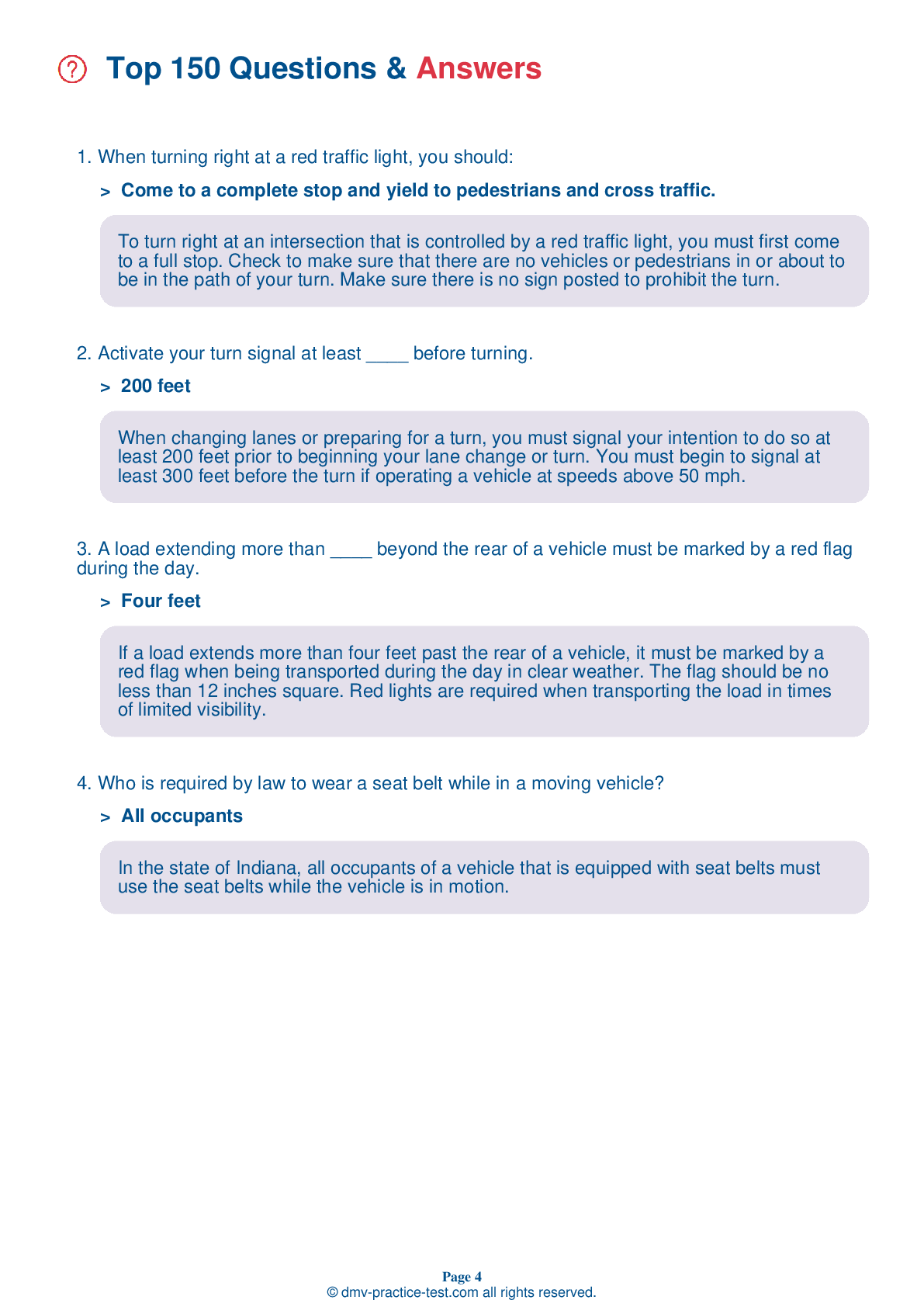FREE Indiana DMV Practice Test #13 Page 5 of 5
This set of Indiana DMV practise tests has been updated for January 2025. It includes questions based on the Indiana Driver Handbook's most significant traffic signals and laws for 2025. Use actual questions that are very similar (often identical!) to the DMV driving permit test and driver's licence exam to study for the DMV driving permit test and driver's licence exam.
On the practise exam, each question gets a tip and explanation to help you remember the concepts. The written component of the official Indiana DMV test will include questions about traffic rules, traffic signs, and driving statutes, as well as information from the Driver Handbook.
To obtain a passing grade, you must correctly answer 44 of the 50 questions. Take our DMV practise exam to help you prepare for your Indiana instruction permit or driver's licence.
The DMV exam is available in several languages.
Using any kind of testing assistance will result in an automatic fail, and the DMV may take additional action against your driver's licence, so stay away from it.
39 . These signs indicate:

Warning signs prepare drivers for upcoming road conditions and hazards and are usually yellow with black markings. These signs are object markers and warn drivers about objects or areas that may be hazardous and should be avoided.
40 . This sign means:

Warning signs prepare drivers for upcoming road conditions and hazards and are usually yellow and black. This sign tells drivers that a lane is ending and that they should prepare to allow traffic to merge safely.
41 . This sign means:

Warning signs prepare drivers for upcoming road conditions and hazards and are usually yellow with black markings. This sign alerts drivers to a nearby fire station and tells them to be aware of potential emergency vehicles on the roadway.
42 . The most common color of warning signs is:
Most warning signs are diamond-shaped and yellow with black markings. These signs warn drivers about unexpected conditions that may not be readily apparent.
43 . This road sign means:

This sign indicate that the right lane ends ahead.
44 . This sign means:

Regulation signs regulate traffic speed and movement, displaying rules which drivers must obey. This sign is often posted at the end of one-way streets and warns drivers not to enter a roadway from the wrong direction. Drivers should stop and turn around anytime they approach this sign.
45 . Worn or bald tires:
Worn or bald tires can increase your stopping distance and make turning more difficult. Tires without adequate tread also increase the risk of hydroplaning.
46 . Your tire blows out while you are driving. You should:
If you experience a tire blowout, do not immediately apply the brakes. Grip the steering wheel firmly and steer to remain in your traffic lane. Reduce your speed gradually by releasing the accelerator and staying off the brakes. Once you are moving very slowly, apply the brakes lightly and pull off the road into a safe area.
47 . A steady yellow traffic signal means that a ____ light will soon appear.
A steady yellow light on a traffic signal indicates that a steady red light will soon appear.
48 . When you see this sign, you must:

Any eight-sided sign is a stop sign. At an intersection with a stop sign, you must stop completely and check for pedestrians and cross traffic in the intersection. Wait for the intersection to clear before proceeding.
49 . This sign means:

Warning signs prepare drivers for upcoming road conditions and hazards and are usually yellow with black markings. This sign tells drivers that they are near a playground and should look out for children in or near the roadway.
50 . This sign tells you that:




